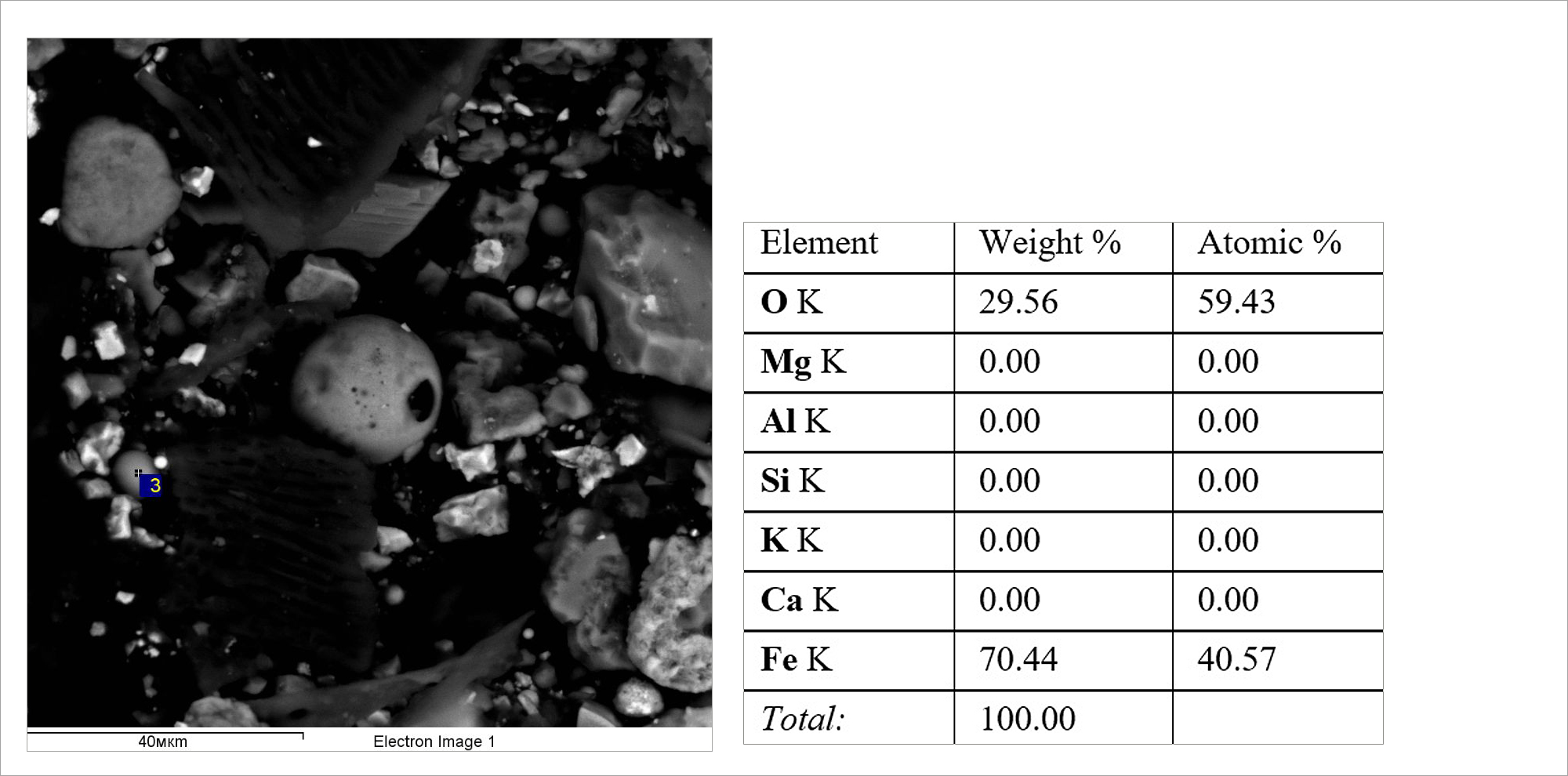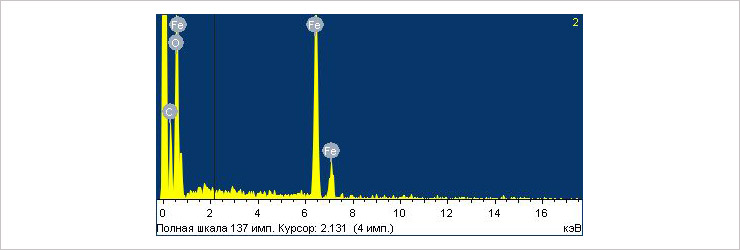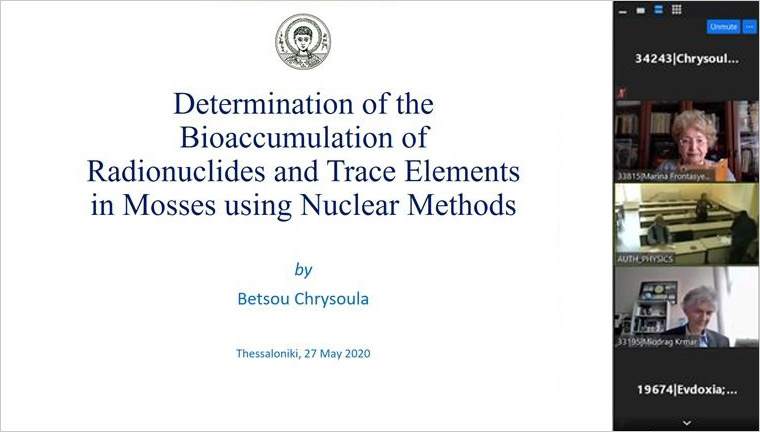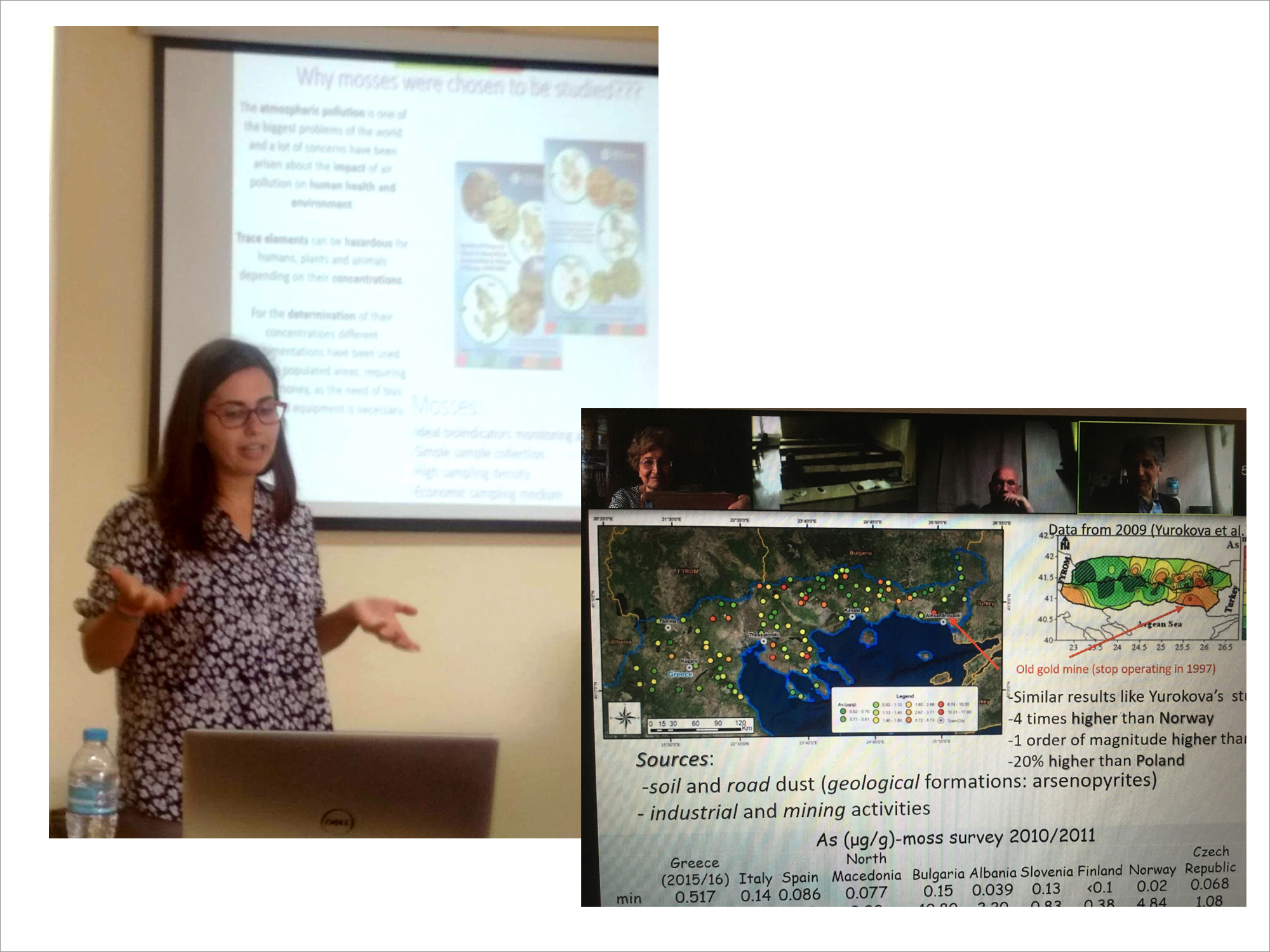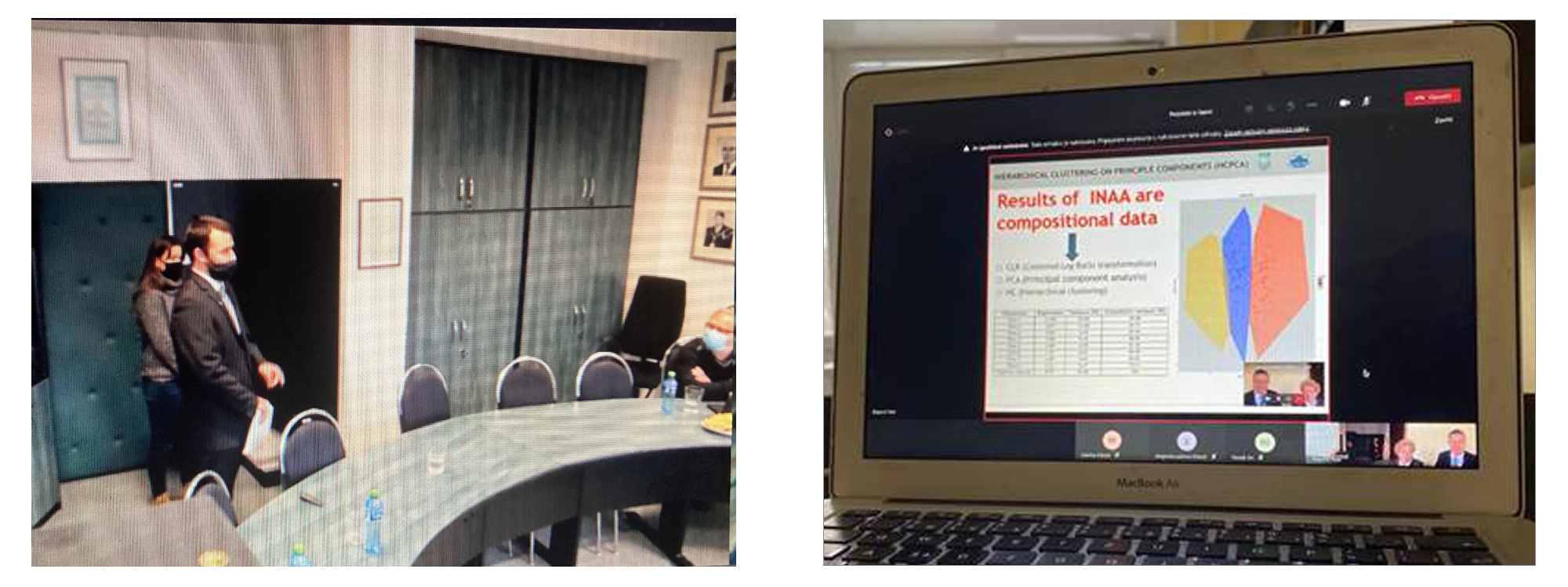JINR participates in the European programme for the analysis of air pollution
Publications, 21 December 2020
Marina Frontasyeva, Coordinator of the United Nations air programme in Europe, Advisor to the Directorate of the Frank Laboratory of Neutron Physics, reviewed the participation of JINR in the European programme of the United Nations “Atmospheric Deposits of Heavy Metals in Europe – Assessment Based on Analysis of Moss-Biomonitors”. In addition to the obvious scientific value of the work in this direction, the educational aspect is also noteworthy. A large number of bachelor and master theses, as well as several Ph.D. theses have been defended. In particular, young scientists Christina Betsow (Greece) and Vladislav Zvozilik (Czech Republic, LIT JINR) defended their dissertation Ph.D. theses in 2020.
In November 2020, the Report of the Coordination Center of the UN International Program on the State of Air Pollution in Europe and partly in Asia was published based on the analysis of biomonitor moss for the determination of heavy metals, nitrogen and persistent organic pollutants (POPs).
M. Frontasyeva, H. Harmens, A. Uzhinskiy, O. Chaligava and participants of the moss survey (2020). Mosses as biomonitors of air pollution: 2015/2016 survey on heavy metals, nitrogen and POPs in Europe and beyond. Report of the ICP Vegetation Moss Survey Coordination Centre, Joint Institute for Nuclear Research, Dubna, Russian Federation, 136 pp. ISBN 978-5-9530-0508-1.
The JINR Publishing Department in excellent performance published the results of the work of 36 countries, including 14 JINR member countries: the Russian Federation, Azerbaijan, Armenia, Belarus, Bulgaria, Vietnam, Georgia, Kazakhstan, Moldova, Mongolia, Poland, Romania, Slovakia, Ukraine and the Czech Republic. Thanks to the collaboration of two JINR Laboratories – Neutron Physics and Information Technologies – on the JINR cloud platform, a Data Management System was created, in which, for the first time in the history of the UN Air Program in Europe, the idea of collecting information uploaded by direct participants of the Program was implemented to assess the quality of ambient air.
This is the sampling map moss biomonitors collected in Europe in 2015-2016. In total, information on 5156 samples was inserted into the database, which contained data on environmental pollution by heavy metals and other toxic elements.
 Sampling map of moss biomonitors in Europe in 2015-2016
Sampling map of moss biomonitors in Europe in 2015-2016
The undoubted value of these works lies in the possibility of using the obtained data to assess the risk of the impact of air pollution with heavy metals on public health.
In most European countries, the need to study the consequences of their impact on the environment and human health has led to the creation of national and international programs for the biomonitoring of atmospheric deposition of heavy metals. Data on atmospheric deposition of HM and other toxic elements are collected based on the analysis of biomonitor moss, which serve as an analogue of aerosol filters. Under the auspices of the UN Commission on the Transboundary Transport of Atmospheric Deposition in Europe (UNECE ICP Vegetation), the Atlas of Atmospheric Deposition of Heavy Metals is published every 5 years. This approach makes it possible to identify and evaluate the areas of these pollution in the studied territories and to compare with the levels of similar pollution in European countries, and since 2010 in a number of Asian countries. The undoubted value of these works lies in the possibility of using the obtained data to assess the risk of the impact of air pollution with heavy metals on public health.
The following countries took part in the 2015-2016 sampling:
Note: all countries submitted data for heavy metals; N and POPs: countries that also submitted data for nitrogen and POPs respectively
The moss biomonitor method, in combination with nuclear-physical and chemical analytical methods of analysis, has been regularly used for the last 30 years in Western European countries to study atmospheric deposition of HM, and over the past 15 years it has become widespread in Eastern Europe. In a number of European countries, the need to study the effects of heavy metals on the environment has led to the creation of national and international programs for the biomonitoring of atmospheric deposition of heavy metals. Within the framework of the international program “Atmospheric deposition of heavy metals in Europe – assessment based on the analysis of moss biomonitors” with a frequency of 5 years under the auspices of the UN, the European Atlas of atmospheric deposition of HM is published. The aim of this program is to qualitatively and quantitatively characterize the distribution of regional atmospheric depositions in Europe and now in Asia, highlight the location of important sources of HM pollution and provide a retrospective picture of comparison with the same studies repeated every 5 years. The HM concentrations in mosses correlate well with atmospheric precipitation, and the transition to the absolute values of HM concentrations in the air through calibration based on the total precipitation amount is quite simple.
The United Nations has created a special Economic Commission for Europe, which is designed to shape the scientific policy of the countries that have signed the UN Convention in the field of studying critical levels of ozone and assessing atmospheric deposition of heavy metals in Europe using a methodology based on the simultaneous collection and analysis of moss biomonitors (Task Force Meeting of the UNECE ICP Vegetation). Information on the activities of this Commission can be found on the Internet site http://icpvegetation.ceh.ac.uk. In 1998, 36 countries, including Russia, signed the UN Convention on the Control of HM Emissions into the Atmosphere Using Biomonitoring (Aarhus Protocol).
The establishment of the UN Commission to study the transboundary transport of air pollution was a consequence of concern about the level of accumulation of heavy metals in ecosystems and their impact on the environment and human health. Data on moss surveys of of moss biomonitors over large areas allow one to assess both spatial and temporal trends (concentrations) of heavy metals, as well as to identify areas with high atmospheric levels as a result of transboundary transport of air pollution.
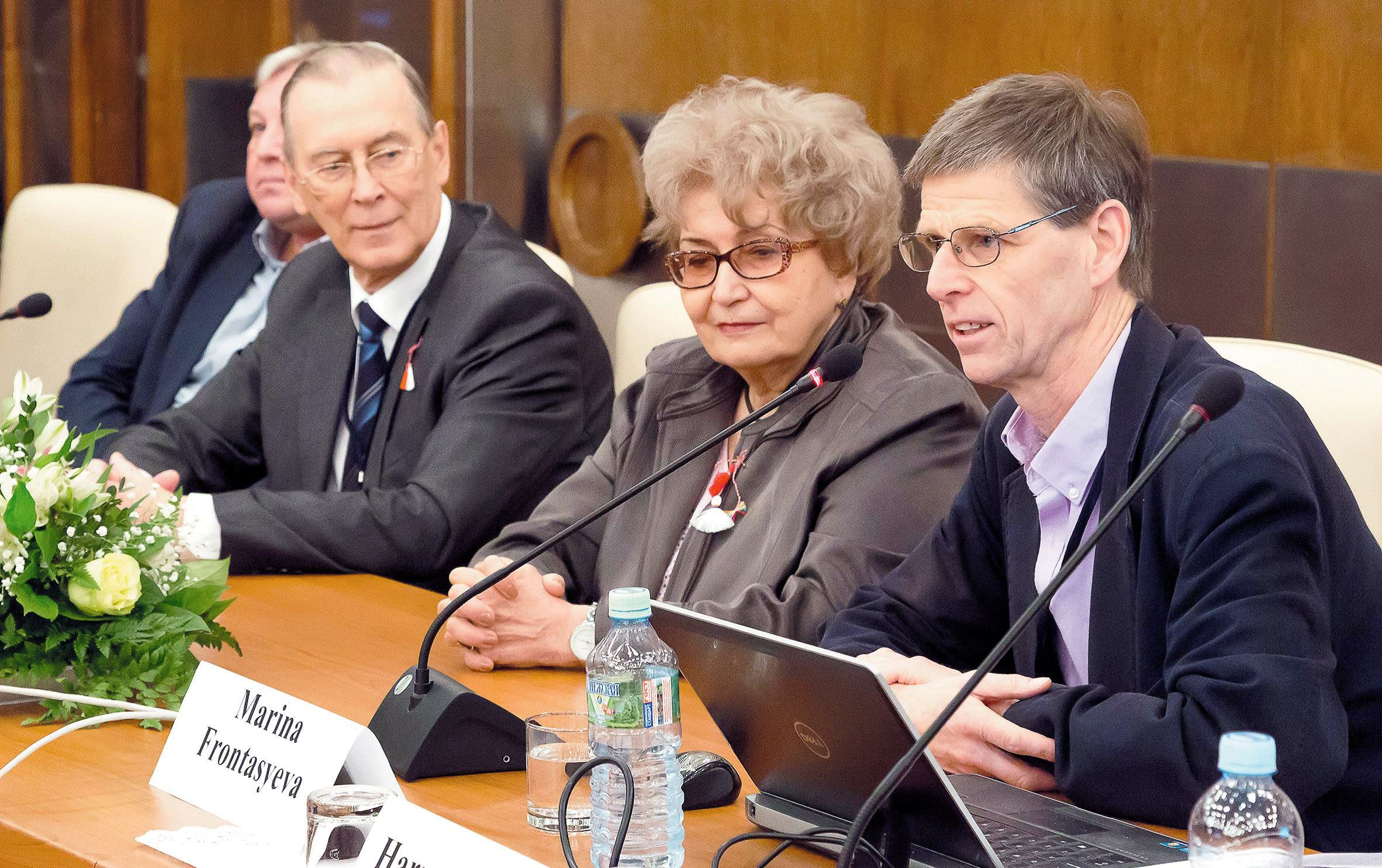 Conference of participants of the United Nations Air Programme in Europe in Dubna in 2016. Right to left: Chairman of the United Nations Air Commission in Europe H. Harmens, Programme Coordinator M.V. Frontasyeva, JINR Director V.A. Matveev, FLNP Director V.N. Shvetshov
Conference of participants of the United Nations Air Programme in Europe in Dubna in 2016. Right to left: Chairman of the United Nations Air Commission in Europe H. Harmens, Programme Coordinator M.V. Frontasyeva, JINR Director V.A. Matveev, FLNP Director V.N. Shvetshov
Since 1995, the Sector of Neutron Activation Analysis of the FLNP JINR has been taking part in the European program “Atmospheric Heavy Metal Deposition in Europe – Assessment Based on Moss Analysis.” The first contribution to the Atlas 1995 / 1996 there were results for the Eastern Carpathians of Romania In 1999, the project of the NAA and Applied Research Sector (project leader M.V. Frontasyeva) “Investigation of atmospheric deposition of heavy metals in some industrial regions of Russia, Poland, Romania, the Czech Republic, Bulgaria and Slovakia using the method of moss biomonitors and nuclear physics methods of analysis and GIS technologies” was included in the problem-thematic plan of the Joint Institute for Nuclear Research and was supported by grants from the Plenipotentiary Representatives of Poland, Bulgaria, the Czech Republic, Slovakia and two grants from the International Atomic Energy Agency (IAEA) for work in the South Urals and in Romania. The Sector also carried out pilot studies in Central Russia (Tula, Tver and Yaroslavl regions, in Western Ukraine, in northern Serbia, and since 2005 – in North Macedonia, and Croatia and Albania, together with specialists from these countries. Canada also participates in the programme.
Participants of the Programme on Biomonitoring of Atmospheric Deposition of Heavy Metals, together with experts on the effects of ozone on vegetation, hold Task Force Meetings annually, where current issues are considered and work plans are discussed. Such meetings of the UN Commission were held twice at JINR: in 2007 and 2016.
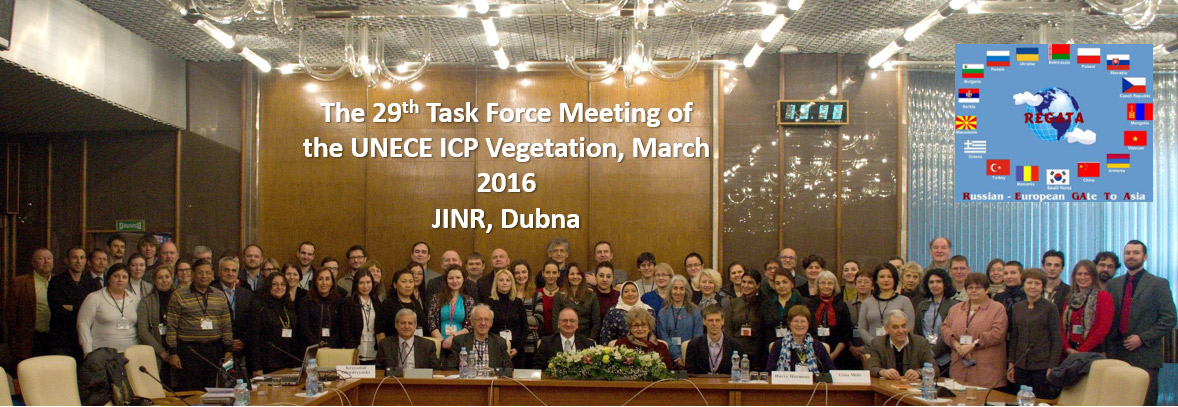 JINR Member States – Armenia, Azerbaijan, Georgia, Kazakhstan and Moldova joined UNECE ICP Vegetation 2015/2016 http://icpvegetation.ceh.ac.uk/ Programme
JINR Member States – Armenia, Azerbaijan, Georgia, Kazakhstan and Moldova joined UNECE ICP Vegetation 2015/2016 http://icpvegetation.ceh.ac.uk/ Programme
For the moss survey in 2015-2016, in addition to the listed countries, SNAA&AR analyzed samples of moss bimonitors collected on the territory of Azerbaijan, Armenia, Belarus, Georgia, Moldova, Greece and Turkey. Two more Asian JINR member countries Mongolia and Vietnam also participate in this UN Program in cooperation with SNAA&AR. In 2005, similar pilot projects were implemented at SNAA&AR together with scientists from China and South Korea. We can expect that these countries will further join the participation in this UN Program.
JINR contributes a lot to the popularization of the UN Program at the world level. So in 2018, the International Conference BioMAP-8 was held in Dubna with great success https://www.biomap-international.com/, which was attended by leading experts in the field of environmental protection from Europe, Asia, Africa, North and South America.
JINR contribution to the implementation of the UN Air Program for Europe was highly appreciated by the UN Secretariat, and in 2014 the coordination of the Biomonitoring Program was transferred from Great Britain to Russia, to the Joint Institute for Nuclear Research in Dubna.

 BioMAP-2018 in Dubna
BioMAP-2018 in Dubna
JINR contribution to the implementation of the UN Air Program for Europe was highly appreciated by the UN Secretariat, and in 2014 the coordination of the Biomonitoring Program was transferred from Great Britain to Russia, to the Joint Institute for Nuclear Research in Dubna.
The choice of mosses for the assessment of atmospheric deposition of HM and other trace elements is determined by the fact that mosses effectively concentrate pollutants from the air and precipitation. Moreover, they do not have a root system and, therefore, the contribution of sources other than atmospheric deposition is in most cases limited. Some types of mosses (Hylocomium splendens, Pleurozium schreberi, Hypnum copressiforme) are distributed over a wide range of temperate climatic zones, and their growing proportion is such that the annual growth can be easily identified. Collecting samples is not difficult, analysis of mosses is much easier than of precipitation, and the exposure period can be precisely determined usually a three-year growth of moss is taken for analysis. Moss can be analyzed by a variety of analytical methods, in particular, coupled plasma mass spectrometry (ICP-MS / OEC), atomic absorption spectrometry (AAS).
At JINR, neutron activation analysis (NAA) is used, which allows the determination of up to 45 elements: Ag, Al, As, Au, Ba, Br, Ca, Ce, Cl, Co, Cr, Cs, Dy, Eu, Fe, Hf, Hg, I, In, K, La, Lu, Mg, Mn, Mo, Na, Nd, Ni, Rb, Sb, Sc, Se, Sn, Sm, Sr, Ta, Tb, Th, Ti, V, U, W, Yb, Zn, Zr. The elements Cd, Cu, Hg, Pb, important from an environmental point of view, are additionally determined by the method of atomic absorption spectrometry (AAS). The defined set of elements significantly exceeds the number of elements (marked in bold) included in the European Atlas. Not all of the above elements are air polluting elements, they are determined by multielement analysis without significant additional costs and can be used as tracers of transboundary air mass transfer.
The existing data on the concentration of heavy metals in mosses from previous moss surveys, as well as present survey in 2020-2021-2022 (the extension of sampling for three years is associated with the COVID-19 pandemic, since not all countries were able to start sampling in the summer of 2020) are an invaluable source information for international negotiations and assessment of environmental pollution by heavy metals.
The establishment of the UN Commission to study the transboundary transport of air pollution was a consequence of concern about the level of accumulation of heavy metals in ecosystems and their impact on the environment and human health. Data on the one-time collection of biomonitor moss over large areas allow one to assess both spatial and temporal trends (concentrations) of heavy metals, as well as identify areas with a high level of atmospheric pollution as a result of transboundary air pollution transport. As can be seen from the studies carried out, the countries of Eastern Europe, the Caucasus region and Russia show high concentrations of pollutants, therefore control over their level is a necessary part of the environmental monitoring in these countries.
Below are examples of distribution maps of some metals from the last Report 2015-2016.
All maps of distributions for 13 elements: aluminum, antimony, arsenic, cadmium, chromium, copper, iron, lead, mercury, nickel, vanadium, zinc, as well as nitrogen, can be found in the Report by downloading it from the link provided in the reference. It also contains information on Persistent Organic Pollutants (POPs).
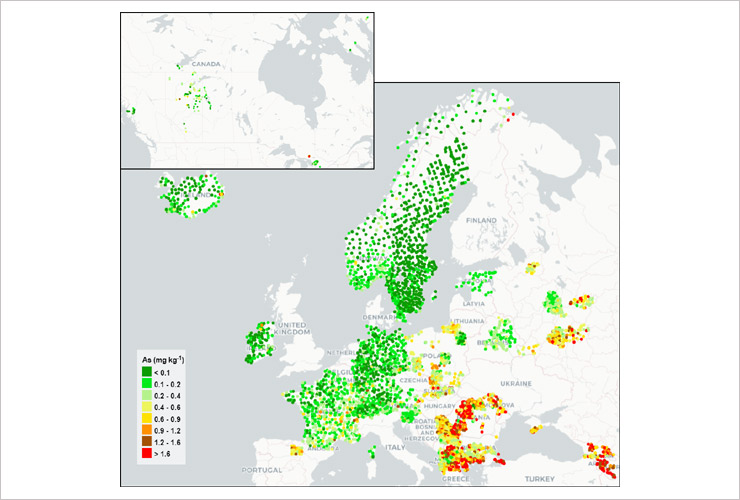 Arsenic concentration in mosses in 2015/16
Arsenic concentration in mosses in 2015/16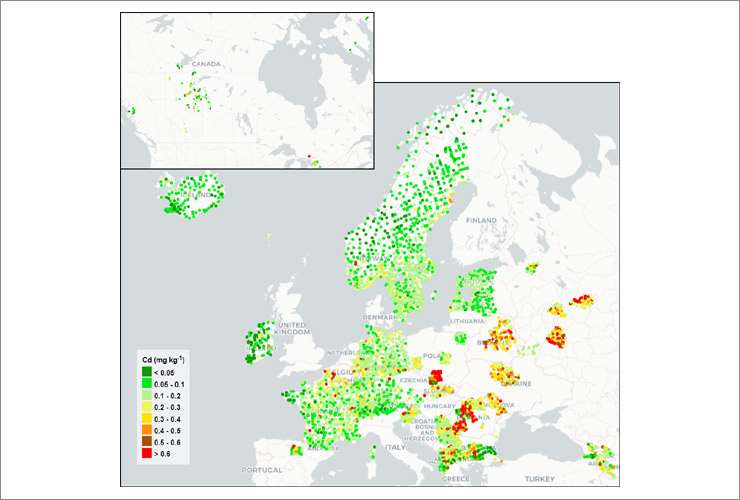 Cadmium concentration in mosses in 2015
Cadmium concentration in mosses in 2015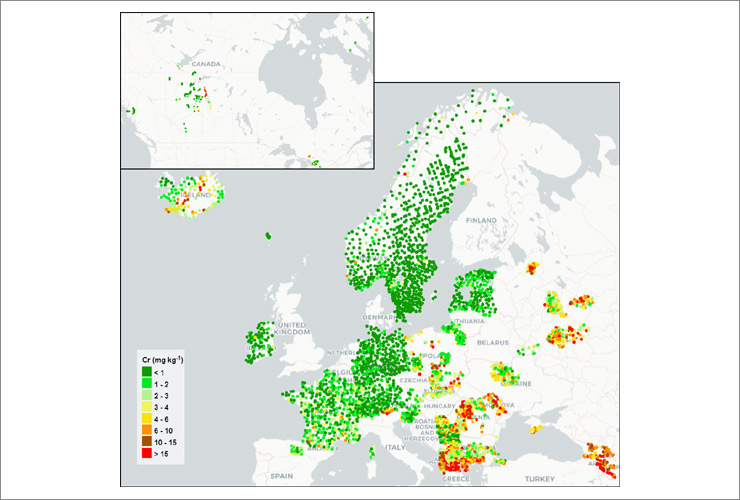 Chromium concentration in mosses in 2015/16.
Chromium concentration in mosses in 2015/16.
In the future there are plans to study the distribution of radioactive elements using gamma and alpha spectrometry. With the help of mosses-biomonitors, it is possible to study cosmic dust, which was shown in joint studies of SNAAPI FLNP and the branch of the Institute of Geophysics of the Earth in the town of Borok, Yaroslavl region, using the method of electron microscopy.
This is what cosmic dust particles look like in moss samples.
Northern foothills of the Greater Caucasus)
Cosmic dust – magnetite microsphere from Kislovodsk moss
In addition to the scientific and practical significance of the work carried out, the educational aspect of work on the biomonitoring of atmospheric fallouts of heavy metals, persistent organic pollutants and nitrogen should be noted. On the basis of the work carried out at SNAAPI, a large number of bachelor and master theses have been completed, several Ph.D. theses have been defended, in particular, on 17 May 2020 at the Aristotle University in Thessaloniki, Christina Betsow defended her dissertation on the material of the analysis of moss biomonitors in Dubna. Due to the coronavirus, the defense took place in conference mode via Internet communication. Christine’s dissertation included both multielement analysis of Greek mosses at the IBR-2 reactor and gamma spectrometry of radionuclides at Aristotle University.
The defense of Vladislav Zvozilik’s thesis “Verification of Mathematical Air Pollution Modelling Results by ADMoSS Model Using UAS Measuremen and Biomonitoring” took place on 3 December 2020 at the University of Ostrava, Czech Republic, in a “mask mode”. His work was interdisciplinary in nature; it included experimental material obtained at SNAA&AR of FLNP, as well as modeling air pollution using software developed by Vladislav at LIT JINR.
 Vladislav Zvozilik (Czech Republic)
Vladislav Zvozilik (Czech Republic)
Both theses were successfully defended. The members of the Dissertation Defense Committees noted the high level of work carried out at JINR.
Marina V. Frontasyeva,
Coordinator of the United Nations Air Program in Europe (Moss Surveys)


